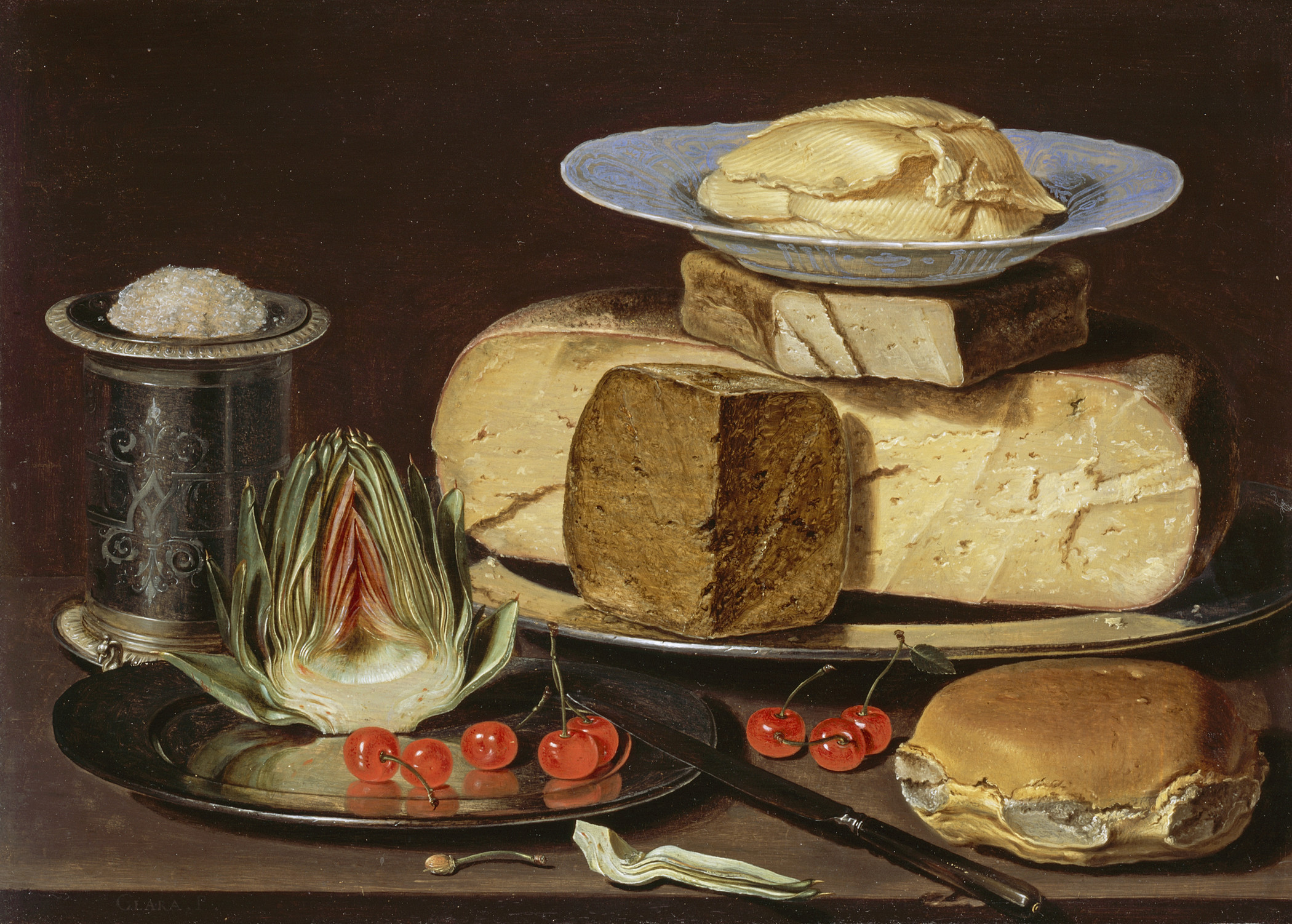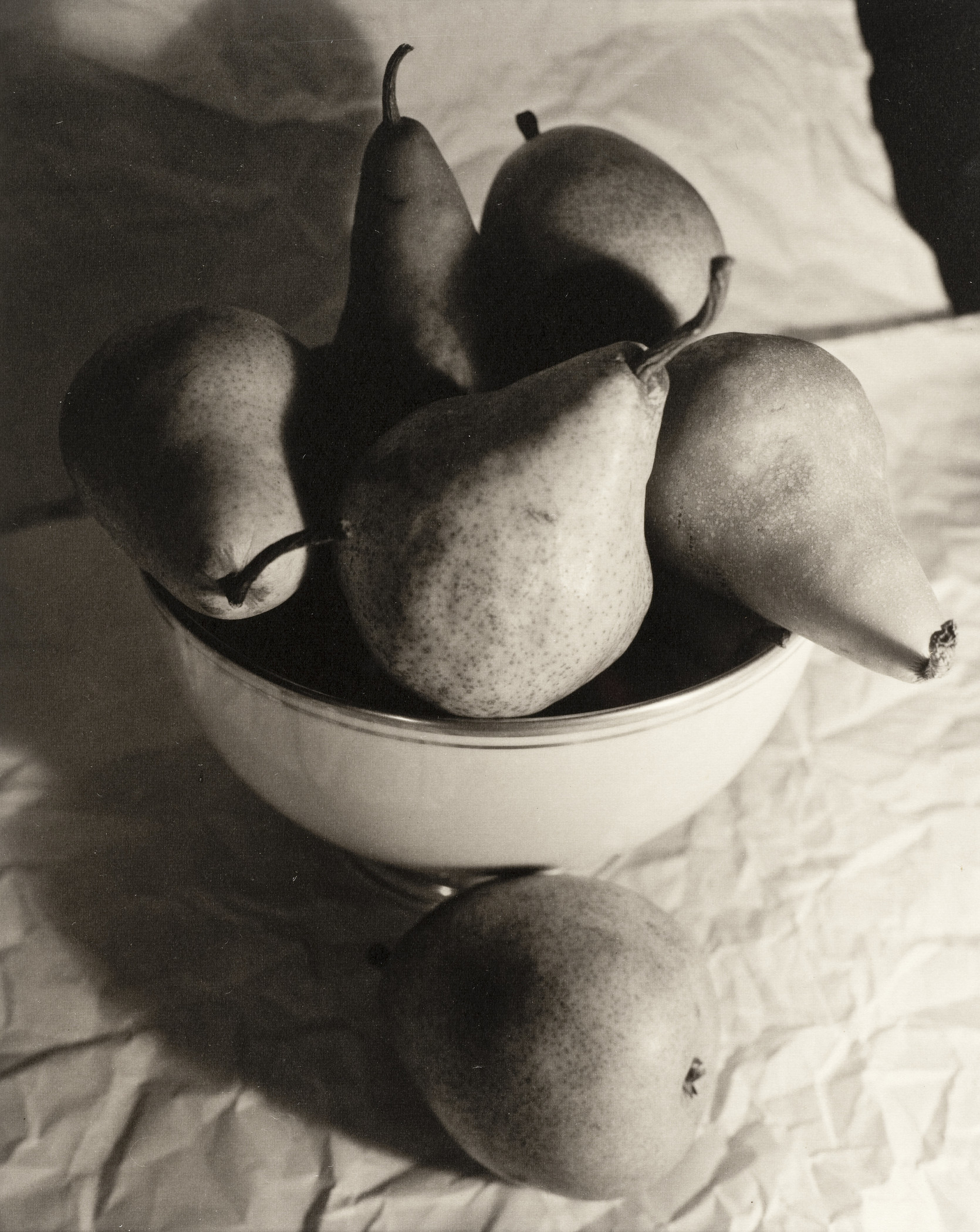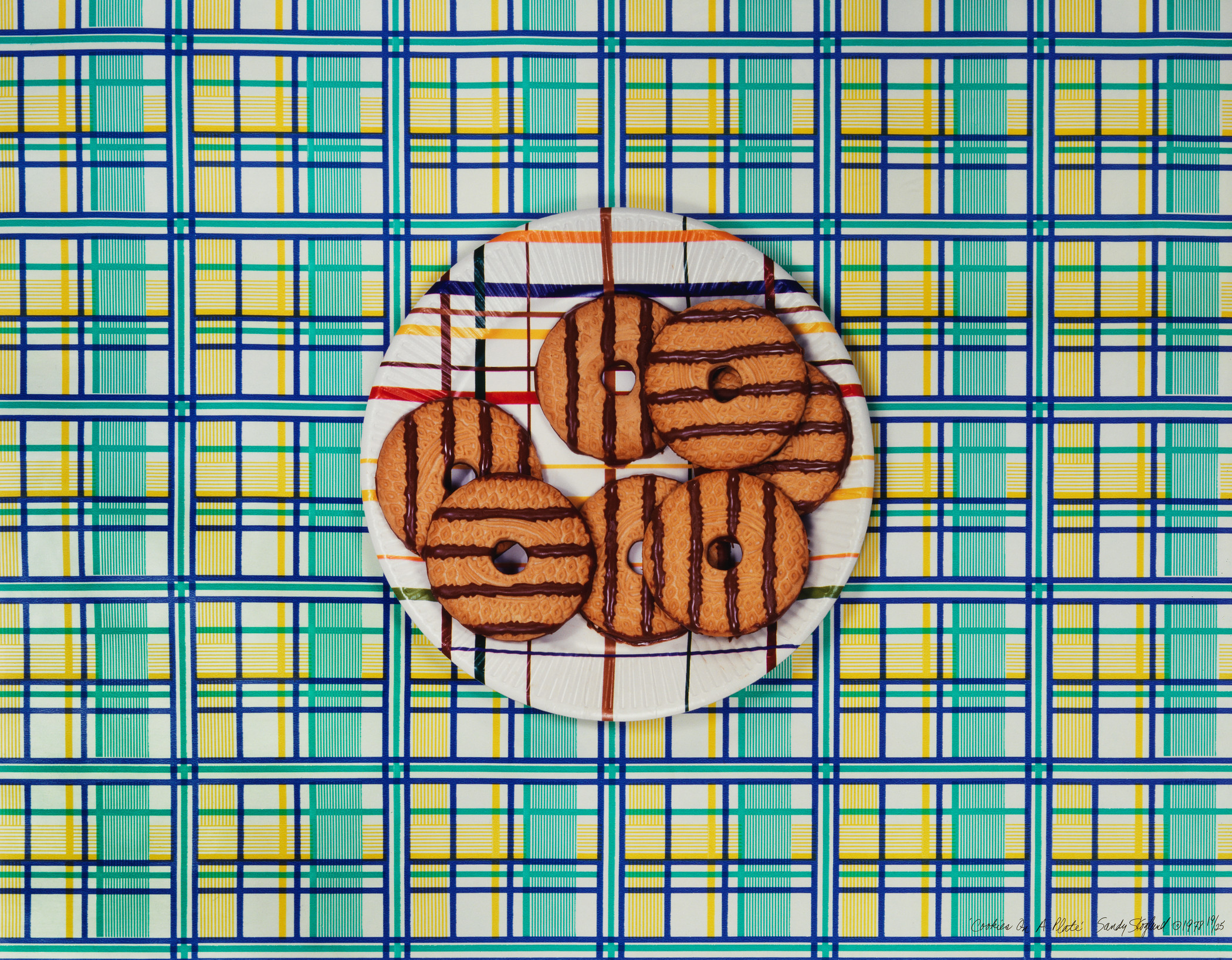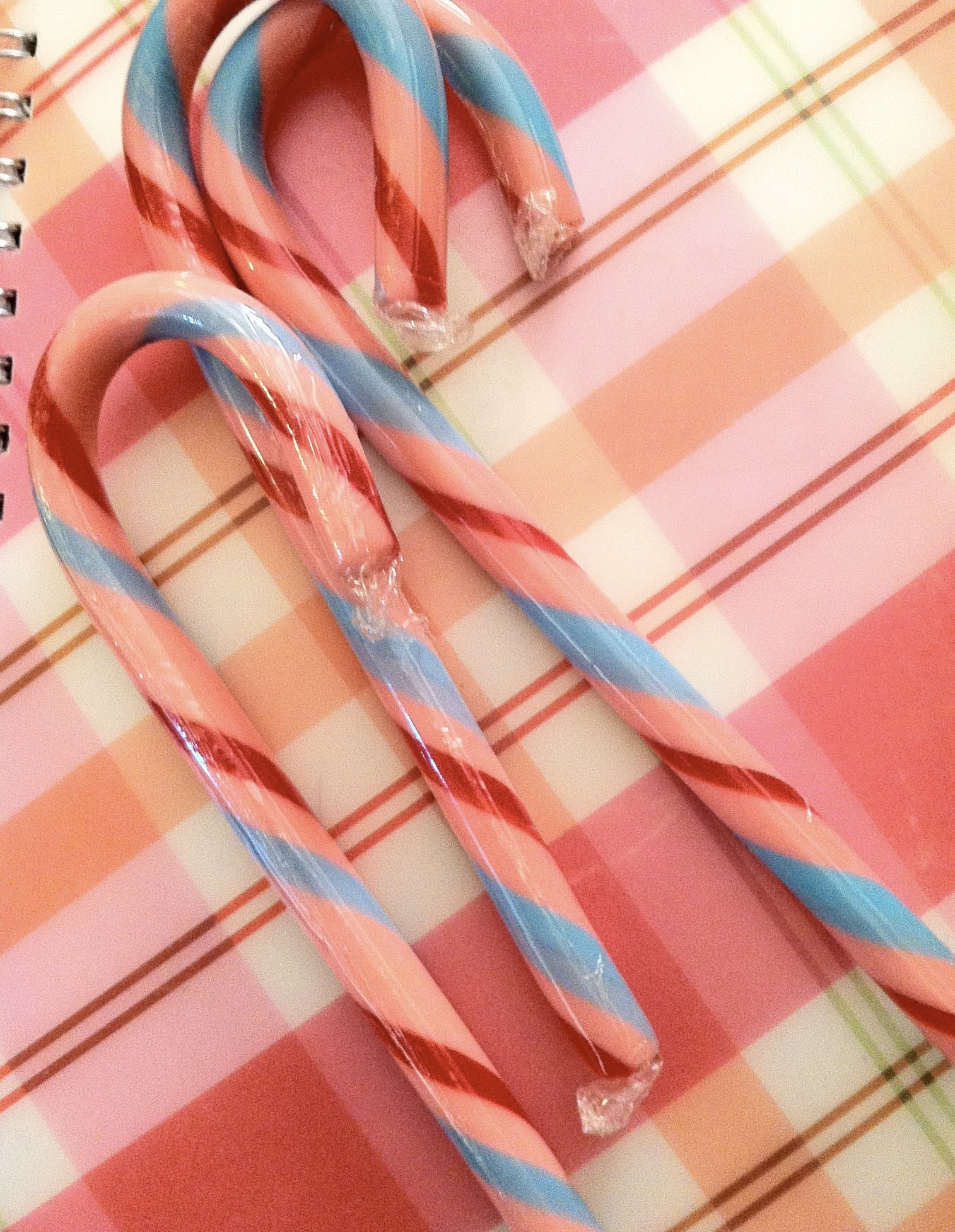When you choose certain things from your surroundings and arrange them in a particular way, you are creating a still life, which you can draw, paint, or photograph. It’s called still because the objects don’t move and life because they are right there in front of you. Artists have been painting their favorite foods and belongings for hundreds of years.
LACMA has an incredible collection of still life drawings, paintings, prints, and photographs from all around the world. Some were made as far back as the 17th century, some were made a few years ago, and there are hundreds of examples from the years in between.
Look at Art:

Clara Peeters painted this almost 400 years ago in what is now Belgium. Everything in this still life happens to grow or be made locally in or near Los Angeles: artichokes, cherries, cheese, bread, and butter. Wait, bread? Look in the bottom right corner of the painting. That round loaf is bread. It gets its shape from being baked in a pot. Did you notice the cherry pit and the artichoke leaf at the bottom of the painting next to the knife? Somebody already started eating. Do you think that is a message for anyone who looks at this painting?
![Marjorie Content, Still Life [Chess Pieces], 1928, Los Angeles County Museum of Art, The Marjorie and Leonard Vernon Collection, gift of the Annenberg Foundation, acquired from Carol Vernon and Robert Turbin, photo © Museum Associates/LACMA Black and white photograph of chess pieces](/sites/default/files/attachments/M2008_40_542.jpg)


Here are three more still lifes in LACMA's collection. This time they are photographs. Marjorie Content photographed chess pieces. Jan Groover photographed pears and Sandy Skoglund photographed cookies on a plate. What do you think each artist is saying in their photograph?
Make Art:
Let’s think about what you want to draw or paint in your still life. You can choose things like your favorite toys, your favorite foods, or objects that have interesting shapes and colors. Perhaps you will collect objects that tell a small piece of your story. You could draw something your grandmother gave you, or a special shell you found at the beach. Does your family eat special foods when they celebrate? That might be a great thing to paint.
Collect, Choose, Arrange, Draw:
Gather your objects. Put everything on a table, then move the objects around until you get an arrangement that you want to draw, paint, or photograph. Don’t be afraid to stack or group things in clusters. Make it interesting!
Here are a couple I came up with. I’ll keep these as photographs for now. Maybe I’ll paint them later.
If you want to draw or paint your still life, set it up so your paper can lie flat on a table. Make sure your still life doesn’t rest on your paper.
Start by drawing an outline of your object(s).
Put color within your drawing so no white paper is showing.
It sometimes helps to squint your eyes to see the shadows and lights on your object more clearly. See if you can paint in a dark color, a medium color, and a light color. This will help your painting to look more three dimensional.
I start with the dark colors because I can see them the easiest. You get to make up the rules on how you draw and paint. Everybody has a different process that makes sense to them.
The more you look at anything, the better you see it. I’m adding more medium-tone colors now. Not too dark and not too light.
Now I’m painting in the lights and the details in the green part that used to be the blossom.
I am adding more light colors. The lightest light is called the highlight. A dark shadow under the orange helps to ground it.
I’ve painted a lot of traditional still lifes, so I’m trying something different today.
I decided to cut out my paintings of fruit and collage them onto a paper that I painted with a color that I mixed. My idea is about floating citrus. This painting does say something about me, but I’ll let you guess what that is.
Does your still life tell a story? I would love to see it and to hear about your ideas. Share your art and tell us why you chose the objects you did. Tag your work @lacma on social media. Have fun making art! I’m going to go eat an orange.




